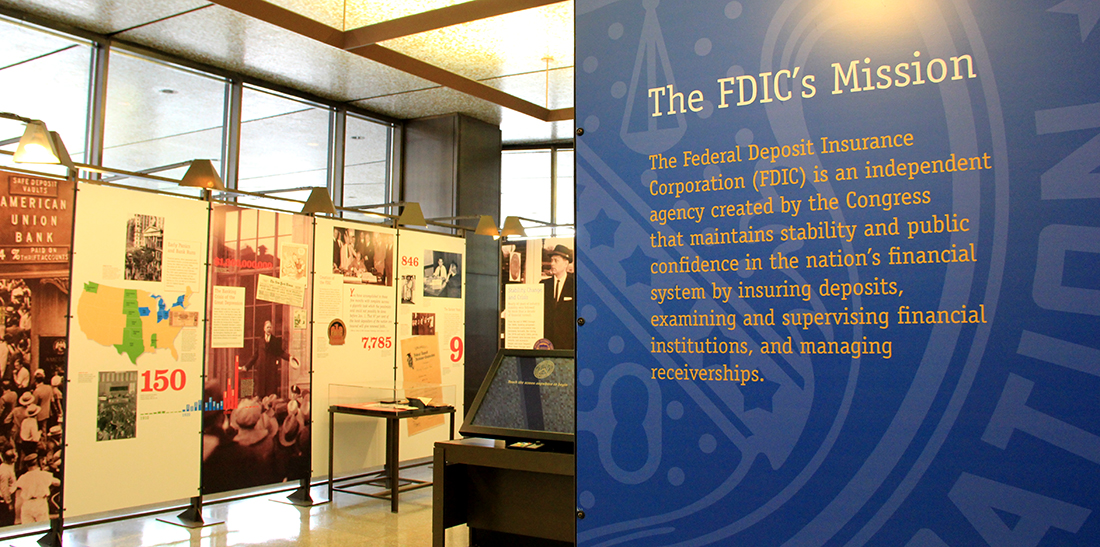Washington — The number of bank failures is slowing down due to the improving economy and rising property values, but the industry is still not back to pre-crash levels and future growth remains uncertain.
Only 14 banks failed in the first half of this year, according to the most recent data from the Federal Deposit Insurance Corp. Last year, 24 banks failed – down from 157 failures in 2010, the peak failure year since the banking sector was taken down by the financial crisis in 2008. Typically, when a bank fails, its capital becomes too low to meet obligations to its creditors because of sustained losses, causing regulators to close it.
“This is a very typical bank failure cycle,” said Bert Ely, a banking industry consultant based in Alexandria, Va. “As the economy improves, banks work out their problems and the FDIC and other banking regulators closed failed banks, then you revert back to the normal situation of having very few bank failures.”
With the economic recovery continuing, many FDIC-regulated banks have improved their balance sheets, made more loans and enjoyed stronger earnings, but the industry has not improved to the single-digit annual failure rate pre-crisis.
“I don’t think we are back to the zero failure,” FDIC’s Chief Economist Richard Brown said, referring to 2005 and 2006 when no banks went under. “There are still institutions dealing with the aftermath of the recession.”
More than 400 banks remain on the FDIC’s unofficial problem list of troubled institutions that may run the risk of failure in the near terms. The list has shrunk to half the size of the peak year of 2010. However, the number remains elevated when measured against the pre-crash year 2007 with its mere 76 problem banks.
The declining pace of failures is an indication of more business activity, lower unemployment rates and a relatively stronger lending market.
In the housing market, property prices have bounced back over the last two years. Major cities tracked by Standard & Poor’s/Case-Shiller Home Price Index have seen double-digit surges in property values. Some, like Las Vegas and San Francisco, showed more than 20% increases in 2013. And because the majority of banks’ long-term loans were secured by real estate, housing price rises helped banks clean up their loan portfolios.
“They don’t have to take as many huge charge-offs because of the decreases of the values,” said Frank Gonzalez, who leads the financial institutions and Securities and Exchange Commission practices at the Miami-based accounting firm Morrison, Brown, Argiz & Farra.
Loan losses across major categories, particularly residential mortgage loans, have continued to decline this year. With fewer charge-offs and sour loans expected, banks have greatly reduced the money they hold back to cushion future losses. According to the FDIC quarterly report, the reserve the industry set aside for bad loans, also known as loan-loss provisions, plummeted to $3.3 billion in the first quarter of 2014 from $30.7 billion in the same period of 2011, down about 89%.
With the set-aside cut greatly, the industry hit an all-time earnings high of $155 billion, compared with $141 billion in 2012.
“Much of the improvement in banks’ earnings has come from a reduction in expenses in loan losses,” the FDIC’s Brown said, attributing the reduction to the bottoming out of the home prices. “And the problem loans the on the banks’ balance sheets have diminished quite rapidly through the last four years of economic expansion.”
As the economy turns positive and bad loans remain stable, the benefits from reserve release will fade. To drive up future earnings, banks have to grow in real terms. But the path remains bumpy.
Persistently low interest rates have limited banks’ ability to earn more on the money they lend. The Federal Reserve has maintained the low rates since the financial crisis to keep borrowing costs low — encouraging consumption and business activities.
“We continue to see relatively weak top-line revenue growth for banks and part of that is reflected by the very low interest rates environment we are in,” said Keith Leggett, senior economist at the American Bankers Association.
“Also, we’ve seen fairly weak loan demand. That’s acting as a drag on institutions,” Leggett said.
A recent survey by the Federal Reserve showed the industry continued to ease the lending standards and terms for many loans.
Some banks resorted to cutting operating expenses to dodge the pressure to grow revenue while others tried to squeeze income from account service fees or overdraft fees that are not determined by interest rates or loan demand. However, these approaches did not seem to make a dent in the overall picture.
“In terms of returns on assets and returns on equity, I don’t think you see quite the same level of profitability that you saw prior the crisis,” the FDIC’s Brown said. “And you’re probably not going to see that in near terms until lending really picks up and interest rate normalizes somewhat.”


